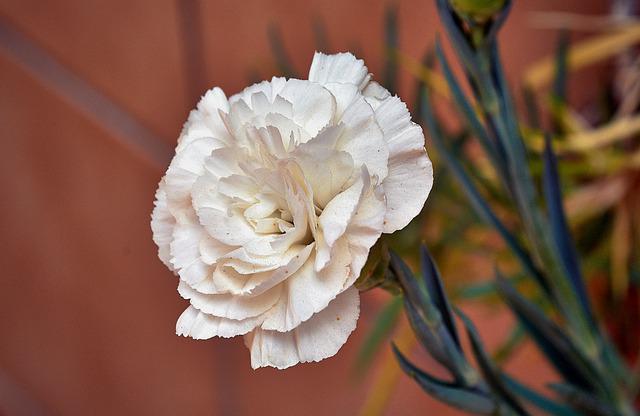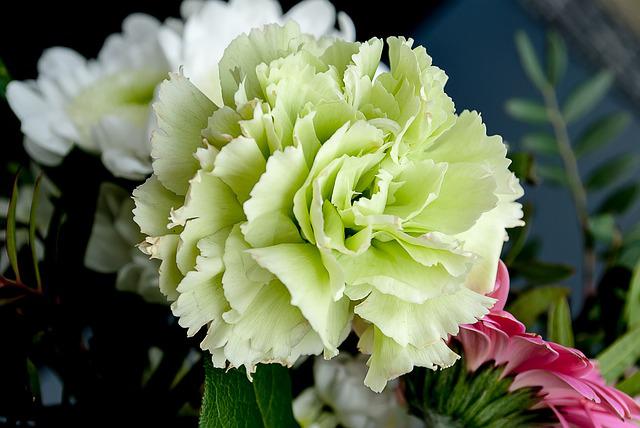Can Carnations Grow From Cuttings? —Growing Carnations from Cuttings
Carnations can be grown from cuttings, but it is important to note that the process is not as simple as one might think. Cuttings taken from healthy stems will grow rapidly and produce flowers, but those taken from unhealthy stems may not flower at all or may do so only sporadically. Furthermore, cuttings taken from older plants produce lower-quality flowers than those from younger plants.

If you are willing to take these risks, cutting carnation stem tips into 4-inch pieces and rooting them in water will work well. Ensure the medium is moist but not wet, and place the rooted tips in a sunny location with moderate light exposure.
Watering should be done weekly, and care should be exercised during watering so that excess moisture does not accumulate on the leaves or roots of your plant. Once flowering begins usually six weeks after rooting, daily watering can be discontinued unless rain coincides with heavy dew production nearby, which would promote higher levels of transpiration for sustenance purposes.
Table of Contents
Best Time for Cutting Carnation
Carnations are easy to grow from cuttings. The best time to take cuttings is in the summer, when the plant grows well after flowering, usually from late June or early July to about September. Mature cuttings are less likely to take root than new growth, and cutting a mature branch is more likely to leave a wound that could get infected. North Dakota State University says that starting a plant from cuttings is the best way to ensure you get the plant you want. Growing from seed doesn’t guarantee that all the plants will have the same genes.
How to Grow Carnations from Cuttings
You can take stem cuttings from a healthy plant to propagate carnations and root them in a soilless potting mix. Keep the cuttings in a warm and humid environment and ensure they receive adequate light. Once the roots have developed, you can transplant the new carnation plants into a larger container or garden bed. The propagating box increases the number of plants sprout from the cuttings by keeping them moist and adding humidity.

- If possible, you will need a healthy parent plant, potting soil, and a propagation box or cold frame.
- Find a stem that isn’t flowering, grab it just below a node, and pull the top of the stem away from the plant.
- If possible, take cuttings from a healthy 1-year-old plant on a cloudy day. Cut about an eighth of an inch below a node. The cutting should measure approximately 6 inches and contain four or five sets of leaves. You can take off the bottom set of leaves, but it’s not necessary to do so.
- Before each cut, put your clippers in a bleach solution (about 1 part bleach to 9 parts water) to kill any germs.
- You can put a little hormone rooting powder or honey on the cuttings if you want. This will make it easier for most carnation cuttings to take root.
- Use a well-drained, moist, and sandy medium, like a mix of 50/50 perlite and vermiculite or 1 part peat to 2 parts perlite. Cut off the two leaves that are next to the cut. Wet the stem of the cutting, dip it in a rooting hormone, and then put it in the medium. Make a hole in the soil with a pencil first, then put the cutting in it. This will help the hormone powder stick to the stem.
- The cuttings are pushed into the growing medium, which is watered and placed in a heated house. A soft drink bottle can be used to make a cheap place for plants to grow. You can buy a simple propagation box at a hardware store or nursery for a few dollars.
- Place the pot in a plastic bag with a little water in a well-lit area out of the direct sun. Avoid dry soil. Make sure the ground doesn’t dry out. Rooting should happen in about three to four weeks, but some cuttings have taken three months to root.
- Between 2 and 3 weeks, cuttings should show signs of new growth.
- Once the plant starts to grow roots, new growth will come from the leaf rosette in the middle. When you see this, slowly open the bag over a few days to let air in. Plant in a pot with compost-rich soil that drains well.
- After five weeks, you should be able to plant the cuttings in the garden or larger containers.
